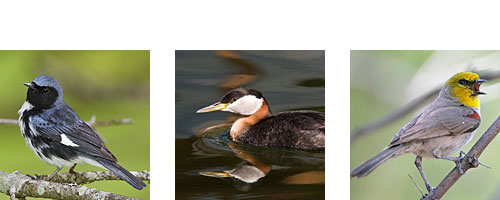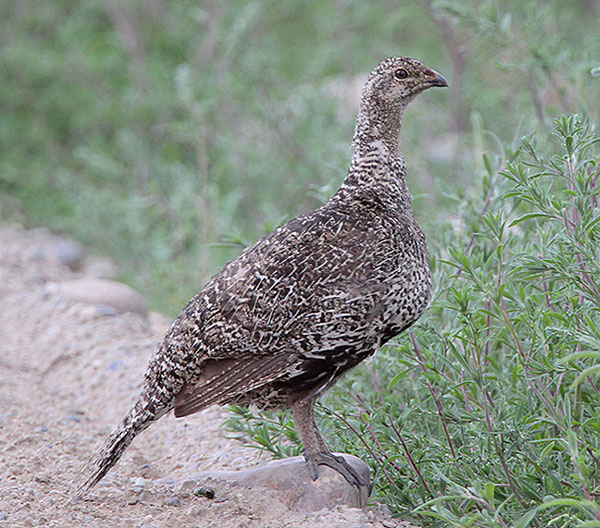
Birds face a an almost unbelievable number of challenges to their survival. From loss of habitat to tall buildings, millions of birds die each year from man-made barriers to survival. Here are a few of the largest problems.
Loss of habitat
Occurs on a world-wide basis. Local organizations, the Nature Conservancy and the American Bird Conservancy are just a few of the organizations working to save habitat. Ducks Unlimited is one of the largest and most successful groups supporting habitat protection.

Gunnison Sage Grouse are endangered due to habitat loss. Photograph © Greg Lavaty
Outdoor cats
Outdoor cats kill tens of millions of native birds each year. Allowing your house cat to roam outside is bad for the birds and bad for the cats. Cats that are kept inside live longer and are generally healthier.
The American Bird Conservancy’s Cats Indoors campaign describes the tremendous impact outdoor cats have on native populations and provides free educational materials.
Building collisions
Migrating birds are killed by the millions each spring and fall from collisions with tall buildings and tall towers. Estimates range from one hundred million to one billion birds die each year due to collisions with human-built structures across North America alone.
Many bird species migrate at night. They are often attracted by lights in office towers and lights located on tall radio and cell towers. The birds fly into the towers and buildings and are killed.
Several cities are participating in Lights Out programs that turn the lights off in tall office buildings at night, during spring and fall migration. Lights Out Chicago, Lights Out Toronto and Lights Out New York are three of the most successful programs. Turning out the lights also saves energy, so it can be a win-win situation.
Visit the Fatal Light Awareness Program website for detailed information on the annual loss of bird life and the simple steps that can be taken to reduce the problem.
Collisions with windows in homes can also be a problem.
Pesticides
With the elimination of DDT, Carbofuran, and dieldrin, the most dangerous pesticides have been eliminated from current practices, and are now illegal to use, although efforts continue to re-certify each one.
Home use pesticides can create a substantial risk to birds and other wildlife. Visit the Gardening for Birds section for information on safe alternatives to hazardous chemicals.
Education programs
Education programs play a vital informational role through working with both children and adults. There are many excellent programs, including:
Environment for the Americas (International Migratory Bird Day)

